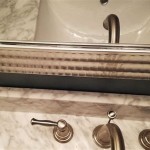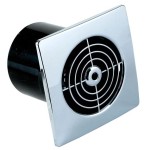How to Install a Glacier Bay Bathroom Sink
Installing a new bathroom sink can significantly enhance the aesthetics and functionality of a bathroom. A Glacier Bay bathroom sink, known for its affordability and variety of styles, is a popular choice for homeowners. This article provides a comprehensive guide on how to install a Glacier Bay bathroom sink, outlining the necessary tools, preparation steps, and detailed installation procedures. Following these instructions carefully will ensure a successful and leak-free installation.
Before beginning any plumbing project, it is crucial to prioritize safety. Ensure the main water supply to the bathroom is shut off. This will prevent accidental flooding and water damage. Turn off the water at the shut-off valves located under the sink or, if these are not present or malfunctioning, at the main water shut-off valve for the house. Test the shut-off by turning on the existing faucet to confirm that no water is flowing. If water continues to flow, the water shut-off valve is not functioning properly and should be addressed before proceeding. Wear safety glasses to protect eyes from debris and gloves to protect hands from potential contaminants.
Gather all necessary tools and materials to minimize interruptions during the installation process. Having everything readily available will streamline the project and prevent potential delays. Ensure compatibility between the new sink and existing plumbing connections. A checklist of required tools and materials is provided below:
- New Glacier Bay bathroom sink
- Adjustable wrench
- Basin wrench
- Pliers
- Screwdrivers (Phillips and flathead)
- Putty knife or scraper
- Plumber's putty
- Silicone caulk
- Caulk gun
- Measuring tape
- Level
- Clean rags or towels
- Bucket
- Safety glasses
- Gloves
- New faucet (if replacing)
- New drain assembly (if replacing)
- Supply lines (if replacing)
The following steps will provide a detailed guide to install your Glacier Bay Bathroom Sink:
Step 1: Removing the Old Sink
The first step is to carefully remove the existing sink. This process involves disconnecting the water supply lines and drain assembly, and then detaching the sink from the countertop or vanity.
Start by placing a bucket under the P-trap, which is the curved pipe under the sink. Use an adjustable wrench to loosen the slip nuts connecting the P-trap to the drain tailpiece (the pipe extending down from the sink drain) and the drainpipe in the wall. As the nuts loosen, water will drain into the bucket. Once the P-trap is removed, use a basin wrench to loosen the nut connecting the drain tailpiece to the sink drain. Be prepared for more water to drain as this connection is broken.
Next, disconnect the water supply lines from the faucet. Use adjustable wrenches to loosen the connections at both the faucet and the shut-off valves. If the supply lines are old or corroded, consider replacing them with new ones. Once the supply lines are disconnected, the faucet can be removed. Depending on the faucet mounting system, it may be secured with nuts and washers or with a mounting bracket. Use a basin wrench or screwdriver to loosen and remove these fasteners.
With the plumbing disconnected, the sink can now be detached from the countertop or vanity. Depending on the type of sink, it may be held in place with clips, adhesive, or caulk. Undermount sinks are typically attached with clips and adhesive, while drop-in sinks are often secured with caulk. Use a putty knife or scraper to carefully break the caulk seal around the sink. Once the seal is broken, gently lift the sink out of the opening. If the sink is an undermount sink with clips, loosen the clips from underneath the counter before lifting it out. Clean the countertop surface thoroughly to remove any remaining caulk or adhesive residue.
Step 2: Preparing the New Sink and Faucet
Before installing the new sink, it is essential to prepare both the sink and the faucet. This involves installing the faucet and drain assembly according to the manufacturer's instructions.
Begin by installing the faucet. Refer to the faucet's installation manual for specific instructions, as the procedure may vary depending on the model. Generally, this involves inserting the faucet shanks through the holes in the sink and securing them with nuts and washers from underneath. Ensure the faucet is properly aligned and tightened according to the manufacturer's torque specifications. Connect the water supply lines to the faucet shanks, but do not tighten them fully at this stage. The supply lines will be connected to the shut-off valves later in the installation process.
Next, install the drain assembly. Apply a bead of plumber's putty around the underside of the drain flange and insert it into the drain opening of the sink. From underneath the sink, install the rubber washer, cardboard washer, and mounting nut onto the drain tailpiece. Tighten the mounting nut securely, squeezing out any excess plumber's putty. Remove the excess putty with a putty knife or rag. Connect the drain tailpiece to the P-trap adapter. Do not overtighten since further adjustments may still be needed.
Step 3: Installing the New Sink
The final step is to install the new sink into the countertop or vanity. This process varies depending on the type of sink (undermount, drop-in, or vessel sink).
For a drop-in sink, carefully lower the sink into the countertop opening. Ensure the sink is properly aligned and seated flush against the countertop. Apply a bead of silicone caulk around the perimeter of the sink where it meets the countertop. Smooth the caulk with a wet finger to create a watertight seal. Allow the caulk to cure according to the manufacturer's instructions before using the sink.
For an undermount sink, apply a bead of silicone caulk to the underside of the countertop around the perimeter of the sink opening. Carefully lift the sink into place from underneath the countertop and align it with the opening. Secure the sink with the clips provided, tightening them evenly to ensure a uniform seal. Wipe away any excess silicone caulk that squeezes out. Allow the caulk to cure according to the manufacturer's instructions before using the sink.
For a vessel sink, the installation process depends on the specific model. Some vessel sinks are simply placed on top of the countertop, while others require a mounting ring or bracket. Follow the manufacturer's instructions for installation. Typically, a hole is drilled into the countertop to accommodate the drain tailpiece. Apply a bead of silicone caulk around the base of the sink where it meets the countertop to create a watertight seal.
Once the sink is securely installed, connect the water supply lines to the shut-off valves. Tighten the connections with an adjustable wrench, being careful not to overtighten them. Turn on the water supply slowly and check for leaks at all connections. If any leaks are detected, tighten the connections further or replace the supply lines if necessary.
Finally, connect the P-trap to the drain tailpiece and the drainpipe in the wall. Tighten the slip nuts securely, ensuring the P-trap is properly aligned to prevent leaks. Turn on the water and check for leaks at all drain connections. If any leaks are detected, tighten the connections further or replace the washers if necessary.
After completing the installation, inspect all connections for leaks. Run water into the sink and check that the drain is functioning properly. Clean the sink and surrounding area to remove any debris or residue. If the installation involved caulking, allow the caulk to fully cure before using the sink. Test the faucet thoroughly to ensure proper operation.
Proper disposal of the old sink is important. Many municipalities offer recycling programs for porcelain and ceramic items. Contact the local waste management authority for information on proper disposal methods. Repurposing the old sink is also an environmentally friendly option. The old sink could be used as a planter or in a utility area.
Adhering to local plumbing codes is essential when installing a bathroom sink. Plumbing codes vary depending on the municipality and may specify requirements for pipe sizes, trap types, and backflow prevention. Consult with a licensed plumber or building inspector to ensure compliance with local codes.
Regular maintenance is important to ensure the longevity and proper functioning of the new sink. Periodically clean the sink with a non-abrasive cleaner to prevent the buildup of soap scum and mineral deposits. Inspect the drain regularly and remove any debris to prevent clogs. Check for leaks around the faucet and drain connections and tighten them as needed. Consider applying a sealant to the sink surface to protect it from stains and scratches.

How To Install A Faucet Glacier Bay 217 251 Diywithlaurenk

Glacier Bay Constructor 4 In Centerset 2 Handle Low Arc Bathroom Faucet Brushed Nickel Hd67499w 6404 The Home Depot

Glacier Bay Bathroom Sink Install Tiktok Search

Glacier Bay 21 6 In Ceramic Rectangular Undermount Bathroom Sink White With Overflow Drain Lvb1038 The Home Depot

Replacing A Bathroom Faucet Fine Homebuilding

Glacier Bay 23 6 In Ceramic Rectangular Vessel Bathroom Sink White With Overflow Drain Lw1828 The Home Depot

How To Install A Glacier Bay 3 Piece Bathroom Faucet

Glacier Bay 24 In W X 19 D 35 H Single Sink Freestanding Bath Vanity White With Cultured Marble Top Gb24p2 Wh The Home Depot

Glacier Bay Bathroom Sink Install Tiktok Search

Glacier Bay Constructor 4 In Centerset 2 Handle Bathroom Faucet Chrome F5121054cp The Home Depot Faucets Powder Room Decor
Related Posts







